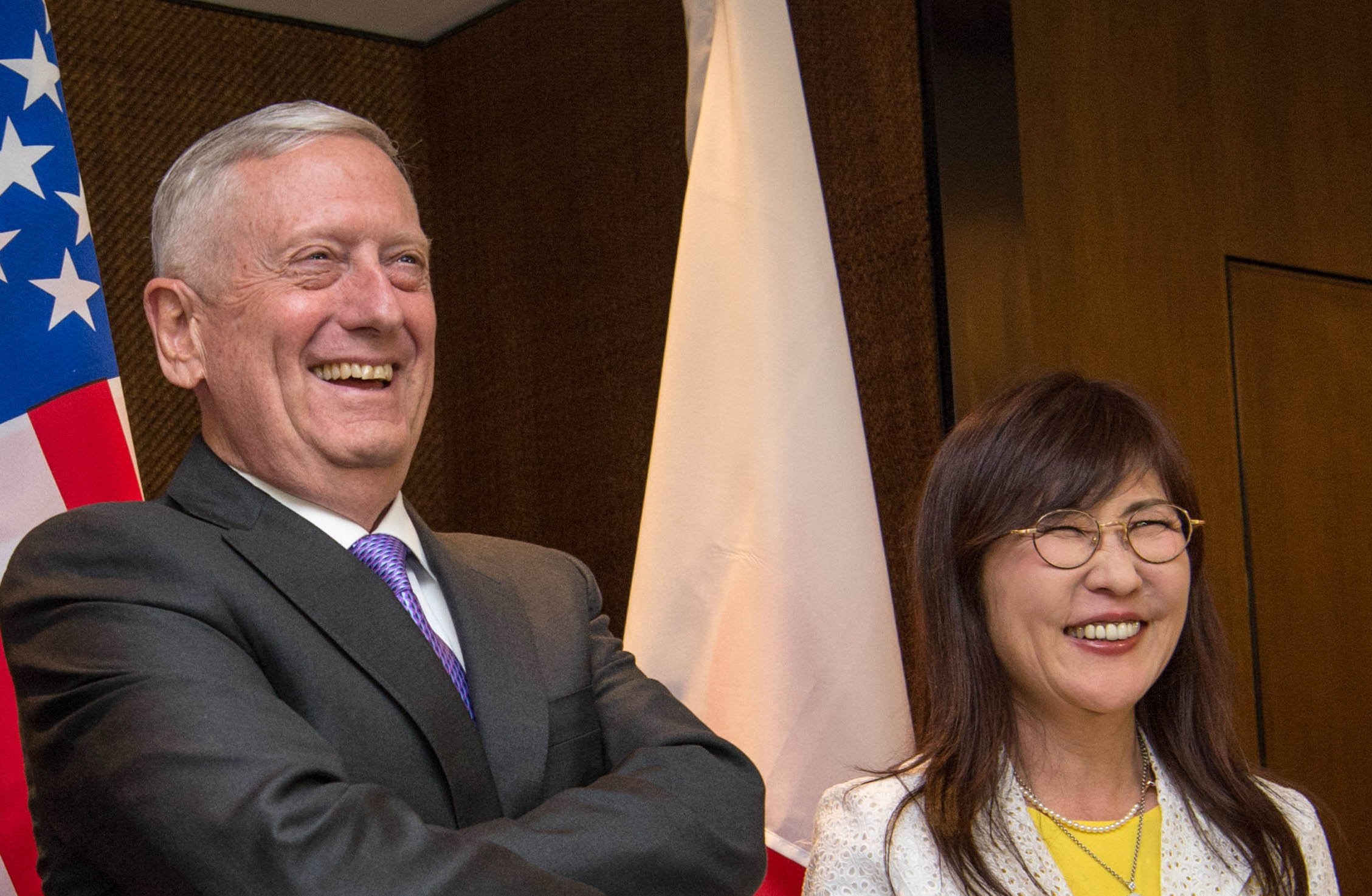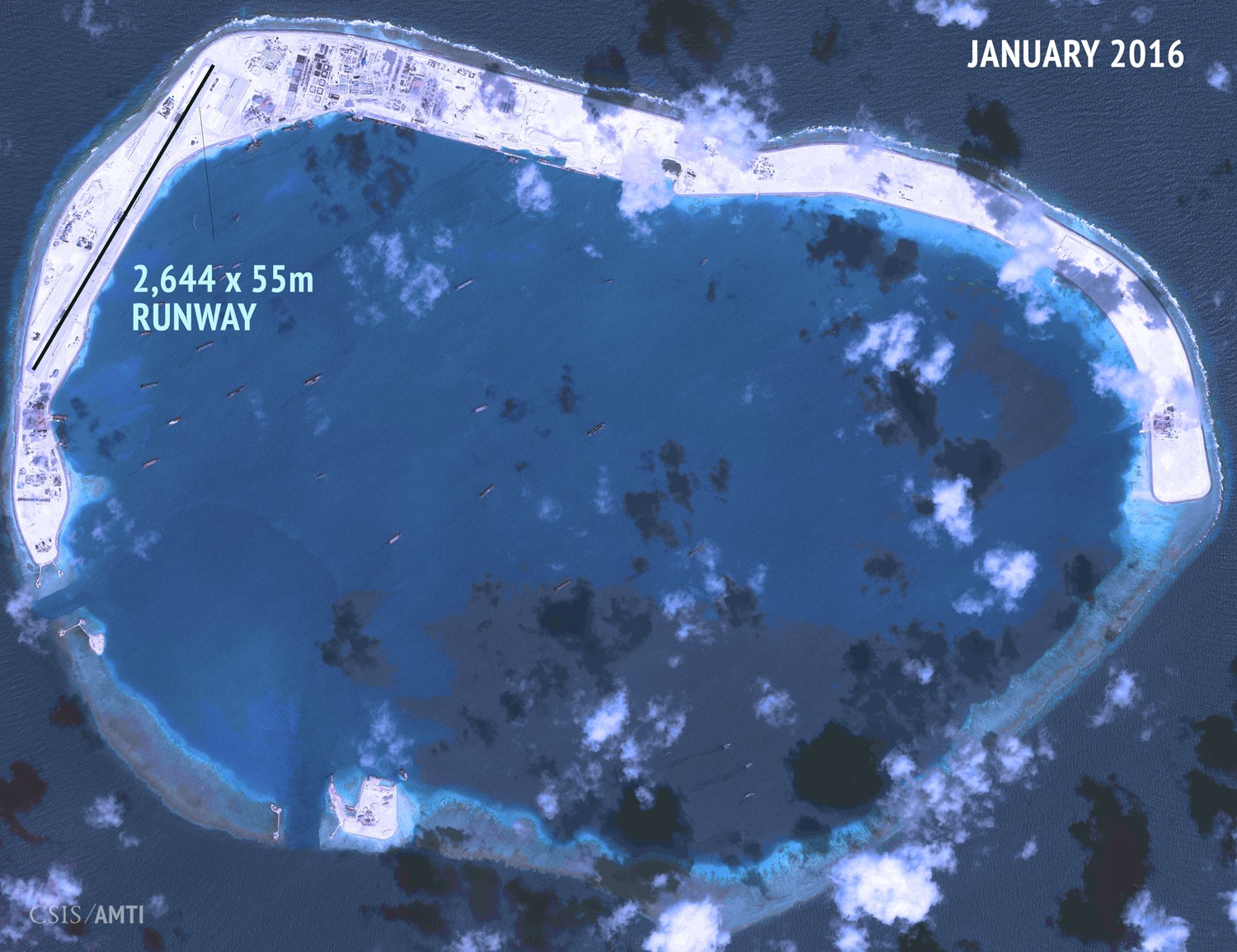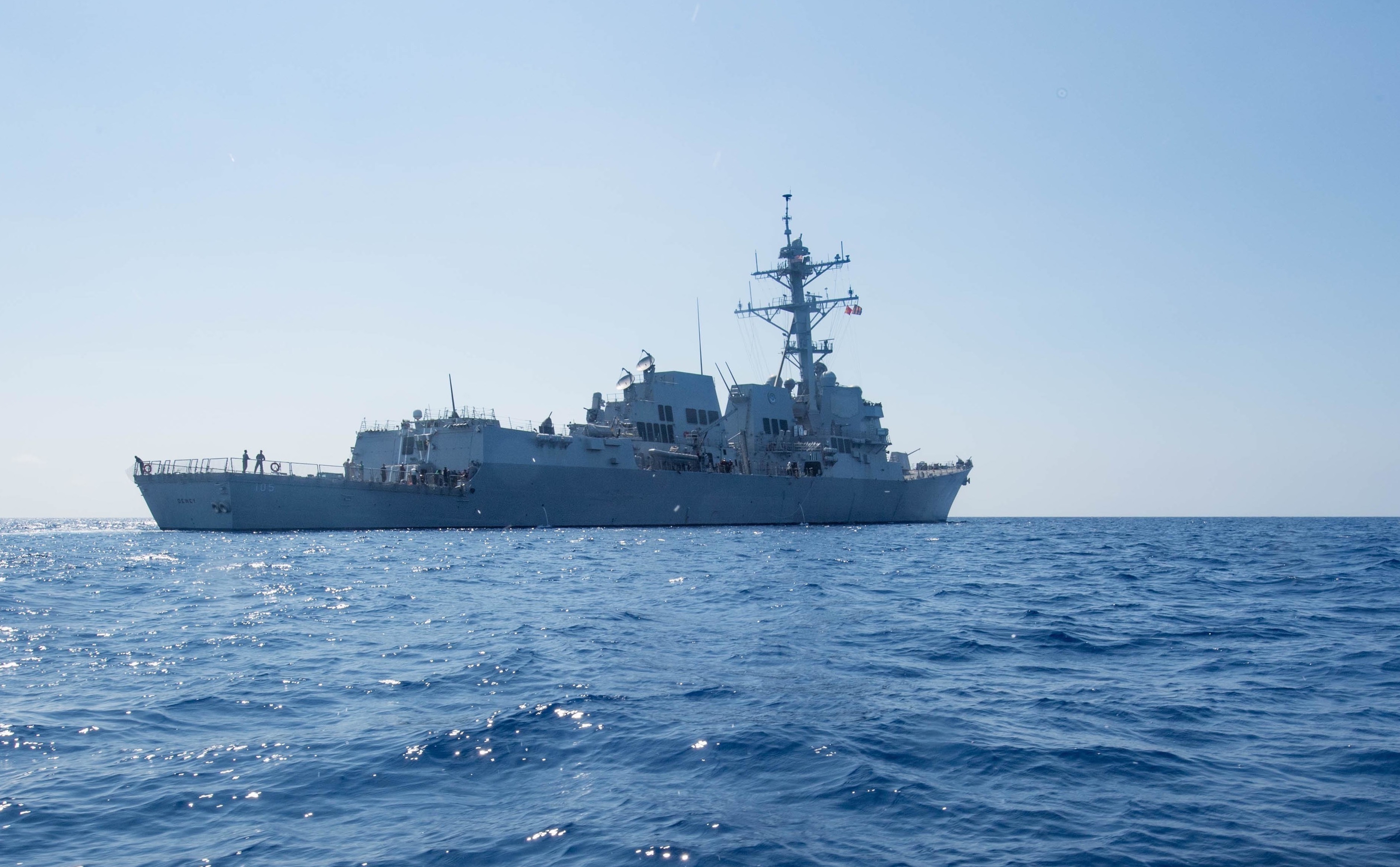
Beijing has issued a rebuke to U.S. Secretary of Defense James Mattis and his Japanese counterpart over comments on the South China Sea that Chinese leadership has deemed, “irresponsible.”
On Saturday, Mattis and Japanese defense minister Tomomi Inada speaking during the Shangri-La Dialogue forum in Singapore presented arguably what was the toughest line either country has taken with China’s expansion in the South China Sea.
“We oppose countries militarizing artificial islands and enforcing excessive maritime claims unsupported by international law,” Mattis said.
“We can not and will not accept unilateral coercive changes to the status quo. We will continue to fly sail and operate wherever international law allows and demonstrate resolve through operational presence in the South China Sea and beyond.”
Inada also singled out China in her remarks at Shangri-La.
“In the East and South China Seas, we continue to witness unprovoked, unilateral attempts to alter the status quo based on assertions incompatible with existing international norms,” Inada said.
In response, a Chinese ministry of foreign affairs spokesperson released an extended and wide-ranging statement condemning the positions of both Mattis and Inada.
“Certain countries outside the region, driven by ulterior motives, insist on making erroneous remarks and calling white black,” ministry spokesperson Hua Chunying said in the Monday statement.
“The Chinese side is firmly opposed to that and urges relevant parties to stop their irresponsible remarks, fully respect regional countries’ efforts to maintain peace and stability in the South China Sea and play a constructive role to that end.”

Hua went on to reassert Chinese claims to its artificial island holdings in the Spratly islands and repeated its line that the island building campaign was to benefit all who transited the South China Sea.
“China builds relevant facilities on islands and reefs of the Nansha Islands for the purpose of improving the working and living conditions for people stationed there, better defending its sovereignty and performing China’s international obligations and responsibilities,” Hua said.
“It is totally within China’s sovereignty to deploy necessary defense facilities on its own territory. It is exercising the self-preservation and self-defense rights that a sovereign state is entitled to, and has nothing to do with ‘militarization’.”
The latest rhetorical rift between the U.S., its allies and China comes a little more than a week after the guided missile destroyer USS Dewey (DDG-105) conducted a freedom of navigation operation off of the Chinese artificial island Mischief Reef.

The first U.S. freedom of navigation operation under the Trump administration was least ambiguous challenge of Chinese claims since the U.S. Pacific Command restarted challenges of Chinese artificial islands in the South China Sea in 2015.
One maritime law expert told USNI News on Monday that much of Beijing’s disagreement with Tokyo and Washington comes from differing reads on international standards on behavior – the United Nations Law of the Sea Convention.
“One disconnect here is that China does not include military activities within its understanding of freedom of navigation, applying it solely to commercial vessels. But freedom of navigation was always considered a military and civilian right,” James Kraska, a professor of international law, oceans law and policy at the U.S. Naval War College’s Stockton Center for the Study of International Law.
“Indeed, during the negotiations for UNCLOS, all major powers, including the USSR, insisted on this point.”
Kraska went on to say, “China chides Japan and the United States as countries ‘outside the region’ who have no business operating there. But the South China Sea is a major international waterway 1.4 times larger than the Mediterranean Sea, and all states have an interest in rules that apply there.”
In addition to the condemnation of the South China Sea comments from Mattis and Inada, Hua also repeated Beijing’s opposition to the U.S. installation of the Terminal High Altitude Area Defense (THAAD) ballistic missile defense system in South Korea, China’s position the ongoing territorial dispute with Japan of the Senkaku Islands and a demand the U.S. stop selling arms to Taiwan.
The following is the June 4, 2017 Foreign Ministry Spokesperson Hua Chunying’s Remarks on US and Japanese Defense Ministers’ Comments at Shangri-La Dialogue.
Q: On June 3, US Defense Secretary Jim Mattis and Japanese Defense Minister Tomomi Inada made comments on issues regarding the South China Sea and Taiwan at the Shangri-La Dialogue. What is your comment on that?
A: The Chinese side has noted their irresponsible remarks and hereby expresses strong dissatisfaction and firm opposition. I want to highlight a few points.
First, China has indisputable sovereignty over the Nansha Islands and their adjacent waters. While safeguarding its territorial sovereignty and maritime interests in the South China Sea, China stays committed to peacefully resolving disputes with countries directly concerned through negotiation and consultation, and upholding peace and stability of the South China Sea with ASEAN countries.
China respects and safeguards all countries’ freedom of navigation and overflight in the South China Sea under international law, but definitely opposes certain country’s show of force in the South China Sea under the pretext of navigation and overflight freedom, challenging and threatening China’s sovereignty and security.
China builds relevant facilities on islands and reefs of the Nansha Islands for the purpose of improving the working and living conditions for people stationed there, better defending its sovereignty and performing China’s international obligations and responsibilities. It is totally within China’s sovereignty to deploy necessary defense facilities on its own territory. It is exercising the self-preservation and self-defense rights that a sovereign state is entitled to, and has nothing to do with “militarization”.
Thanks to the efforts of countries in the region, the situation in the South China Sea has calmed down and turned positive. China and the Philippines have reached consensus on properly managing the South China Sea issue including the arbitration case, and held successfully the first meeting of the bilateral consultation on the South China Sea issue. China and ASEAN countries have worked out the framework of the code of conduct in the South China Sea, as part of the efforts to make effective regional rules following the Declaration on the Conduct of Parties in the South China Sea.
However, in disregard of all these facts, certain countries outside the region, driven by ulterior motives, insist on making erroneous remarks and calling white black. The Chinese side is firmly opposed to that and urges relevant parties to stop their irresponsible remarks, fully respect regional countries’ efforts to maintain peace and stability in the South China Sea and play a constructive role to that end.
Second, China and Japan have territorial dispute over Diaoyu Dao and problem with maritime delimitation in the East China Sea. Diaoyu Dao and its affiliated islands have been part of China’s territory since ancient times. Patrol and law enforcement activities by Chinese government vessels in the relevant waters are justified and legitimate. China is resolute in safeguarding its territorial sovereignty and maritime rights and interests, and will continue with its patrol and law enforcement activities in the future. Remarks made by the Japanese side, which confuse right and wrong, are not worth refuting. The Chinese side urges the Japanese side to work more constructively for the improvement of the bilateral relations and regional peace and stability.
Third, China’s position on the Taiwan question is clear-cut and consistent. The Chinese side stands firmly against the so-called “Taiwan Relations Act” unilaterally made by the US and requires the US to honor the one-China policy and the three China-US joint communiqués, stop selling arms to Taiwan, stop all forms of official interaction with Taiwan and any attempt to elevate its relations with Taiwan, and take solid steps to maintain the overall China-US relations and peace and stability across the Taiwan Straits.
Fourth, China is clear and consistent about opposing relevant countries’ deployment of the THAAD system. We urge them to immediately stop the deployment.





